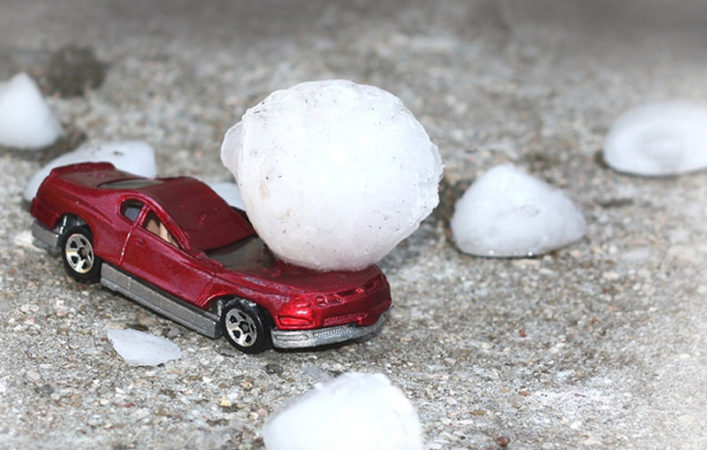
Counting the real costs of hail: Denting not just your car but the economy too


A big hail storm has wreaked havoc in parts of Bloemfontein recently, with claims for damage to homes and vehicles streaming into South Africa’s insurance companies. In a short period of time a hailstorm on the M1 North of the William Nicol highway in Johannesburg can cause extensive damage to a vehicle. For the insurance industry, a hailstorm lasting 20 minutes in two to three Pretoria suburbs could cost up to R100 million in claims for damage to vehicles and homes.
Typically, the hail season occurs over the summer rainfall region of the country, from October through to April. Historical data shows that every season has at least one or more hail event in which hail-related insurance claims exceed R30 million.
The cost relating to hail damage for the South African economy in a financial year is enormous and proves how devastating hailstorms can be. Counting the cost of hail is not just about the expenses related to vehicle repairs, also included in the cost equation are the resulting inconveniences and related costs that impact the consumer, business and the overall economy.
Economic impacts include time lost due to traffic delays, which further result in road freight and delivery cancellations. The additional cost of car hire and lost sales opportunities whilst the vehicles of representatives are undergoing repairs also contributes to the total cost.
For the general insurance industry, hail events can result in a huge dent in the insurer’s income statements but that is what insurance is there for. Claims from these storms can often lead to very expensive repairs that can have a negative impact on motorist without adequate insurance cover, placing these individuals at serious risk of a major financial setback.
It is for this reason that some insurers invest significant resources to mitigate the destructive impact of hail damage. For example, they may have a specialist department employing professional engineers, hydrologists, geographers, analysts and actuaries assisting to manage the potential impact of severe weather events and patterns.
This is important when taking into account the effects of climate change and the increasing frequency of severe weather events. They help the company to better understand the risk landscape and to inform policyholders about expected severe weather events, thereby helping them to mitigate potential risks.
Predicting the likelihood of extreme hail events is a more complex process. It is not always possible to predict when and where hail storms may occur. It therefore becomes important to monitor and track weather patterns – particularly those that have the potential for storm or hail damage. In geographic locations where there may be the likelihood of hail storms, this should be communicated to policyholders (via SMS and social media) to alert motorists and homeowners to take preventative measures to mitigate their risk.
Policyholders should ensure that they have adequate insurance cover in place – particularly for those that live within hail prone areas. Without the necessary insurance, consumers will have to foot the bill for repairs themselves – as well as the considerable cost and inconvenience that usually accompany such incidents.
Source: Santam


